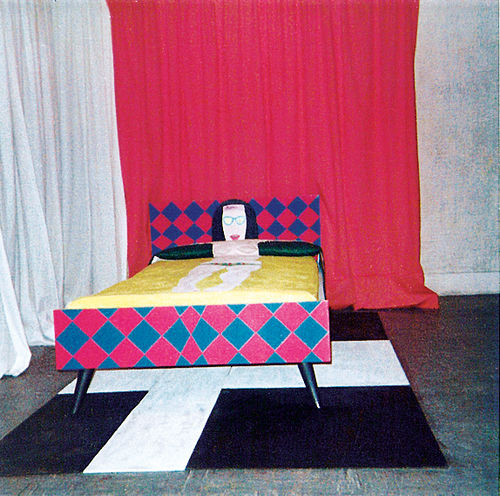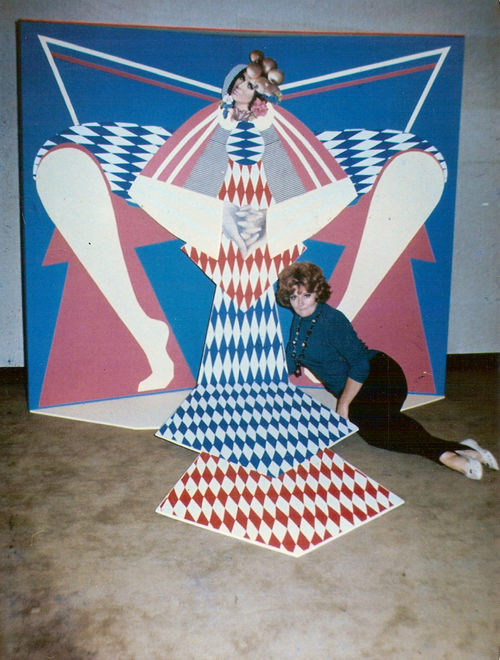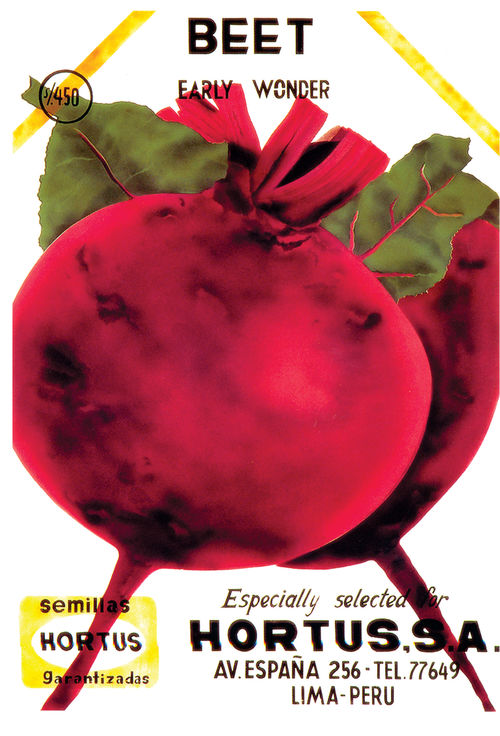Making Sense of Violence
Until relatively recently it seemed difficult to reach a consensus on the very existence in Peruvian art history of work that deals with issues of gender and sexuality. The paucity of local curatorial projects and critical writing that engage feminist politics and the gap between feminist movements and artistic practices—a gap that has begun to be bridged since the 1980s—make it appear that art has contributed little or nothing to feminist political debate. Similarly, male artists continue to outnumber female artists in the country's major art collections; more exhibitions of male artists are held and books on their work published. This ongoing imbalance is not happenstance but an effect of unequal opportunity and recognition for the work of women artists on a local cultural circuit that reproduces the exclusion, discrimination, and symbolic violence that characterize broader social life. Problems include obstacles to entering the labor market, unequal pay, prejudice and stereotypes about what women are capable of, poor pregnancy and maternity leave and benefits, and sexual harassment. Despite all this, many women artists have introduced other ways of envisioning art and addressing politics. With words, images, objects, and formulations, many of the artists discussed here have dared to reshape the patriarchal social order. Their determination to create ushered in the future.
Gender and Sexuality in Avant-garde Art
As part of a process of national modernization, the 1950s witnessed a series of debates that questioned male privilege and expanded the public sphere. In late 1955 Peru became the second-to-last country in Latin America to grant women the right to vote and thus to give them legal and political equality and to recognize them as full citizens.# It is symptomatic that, over the course of the twentieth century, a large number of women educated as artists chose not to participate in the art scene, whether due to lack of opportunities to show their work, the decision to pursue employment that—unlike art—might allow them to support themselves financially, or the demands of the unpaid domestic work associated with marriage.
Starting in the 1960s, women artists such as Teresa Burga (b. 1935), Gloria Gómez-Sánchez (1921–2007), Yvonne von Mollendorff (b. 1949), and Cristina Portocarrero (b. 1943) participated in the experimental avant-garde art scene that revolved around environments, happenings, and works in a pop art aesthetic. While there have been general readings of that experimentalism, little has been said about the distinctive contributions of women artists. Burga and Gómez-Sánchez—the only women members of the avant-garde Arte Nuevo group (1966–68)—addressed concerns related to the body, gender, and sexuality.# Their scrutiny of the regime of the male gaze and of the traditional rhythms of domestic life and of family dynamics is evident in works such as the environment Objetos (Objects, 1967; fig. 1), in which Burga painted the outline of a partly undressed female body vanishing into a bed's sheets, pillows, and headboard. In La corbata (The necktie, 1968; fig. 2), Gómez-Sánchez staged an unruly and undisciplined sexuality in a hyperbolic female body out of which surfaces a long tie that challenges the power of masculine culture. Both artists used furniture from their own homes to signal private spaces as places of control and exploitation, appropriating as well the codes of fashion to parody sexism in the representation of women. Most critics, however, discussed the work of women artists in formalist terms, demonstrating their inability to capture the spirit of protest and disobedience that a strident pop aesthetic concealed.#
A telling case of the difficulties that artists faced in combining feminist activism with artistic production in the 1960s and early 1970s is that of Cristina Portocarrero. She graduated from the Escuela de Bellas Artes in 1970 and participated, fleetingly, in the avant-garde scene. Her pop paintings featured images of packages of flower and plant seeds (fig. 3). Portocarrero was an early participant in women's rights groups, cofounding in 1972 the Acción para la Liberación de la Mujer Peruana (ALIMUPER), which—like the Movimiento de Promoción de la Mujer and the Grupo de Trabajo Flora Tristán#—was a pioneering feminist organization in Peru. She almost immediately decided to abandon the art milieu, however, in order to focus solely on organizing political rallies and social movements and on her work in education for family planning and feminist consciousness-raising.# It was not until 1988, when Portocarrero decided to forgo political activism, that she returned to the art scene, showing work for the first time in almost fifteen years. "My home, my children, my commitment to the feminist movement, and my research were the reason I stopped painting," she explains.#
Excerpted from Radical Women: Latin American Art, 1960–1985. Copyright © 2017 by the Armand Hammer Museum of Art and Cultural Center, Inc. Published by DelMonico Books, an imprint of Prestel. The full essay can be found in the exhibition catalogue, available here.
See Cecilia Blondet and Patricia Oliart, "Las mujeres y el género," in En el umbral del milenio: Investigaciones preparatorias para la conferencia, ed. María Fort Brescia and Moisés Lemlij, vol. 4 (Lima: Comisión de Promoción del Perú, Seminario Interdisciplinario de Estudios Andinos, 1999), 37–68.
The permanent members of the Arte Nuevo group were Luis Arias Vera, Gloria Gómez-Sánchez, Teresa Burga, Jaime Dávila, Emilio Hernández Saavedra, José Tang, Armando Varela, and Luis Zevallos Hetzel. On the place of women in that group, see Miguel A. López, "Lo más cerca posible del azar: Una conversación con Teresa Burga," in Teresa Burga: Estructuras de aire, ed. Miguel A. López and Agustín Pérez Rubio (Buenos Aires: Museo de Arte Latinoamericano de Buenos Aires, 2015), 85–93.
It is telling that Juan Acha—the leading critic of the day and the greatest advocate of the experimental avant-gardes—could not see the gender criticism in Burga's and Gómez-Sánchez's work. He discussed their environments in terms of technical innovations within the language of pop art. See Acha, "Ambiente expresionista: Muestra de Teresa Burga," El Comercio (Lima), July 27, 1967. One exhibition that attests to the imbalance in the participation of female and male artists is 29 años de pintura peruana, which was presented at the Instituto Cultural Peruano Norteamericano in July 1967 as an overview of the most representative current art from Peru. The "sixty-three eminent painters" featured in the show included only seven women: the painter Julia Codesido, the painter Esther Fuller, the sculptor Cristina Gálvez, the Dutch archaeologist María Sholten, and three experimental artists from the new generation: Teresa Burga, Gloria Gómez-Sánchez, and Ella Krebs. See "El aporte de la mujer peruana a la pintura," Ultima Hora (Lima), July 15, 1967.
The Grupo de Trabajo Flora Tristán is in no way affiliated with the better-known Centro de la Mujer Peruana Flora Tristán, created in 1979 as part of the second wave of feminism organized around nongovernmental organizations. For a first-person account of the struggles of those first feminist groups in the early 1970s, see Helen Orvig, Comprendí por qué éramos tantas: El despertar de las mujeres en el Perú (Lima: Centro de la Mujer Peruana Flora Tristán, Universidad Peruana Cayetano Heredia, 2015).
Cristina Portocarrero, conversation with the author, April 3, 2015.
Julia Vicuña, "El postmodernismo de Cristina" (Lima, 1988), 31–32; clipping in the artist's archive.








